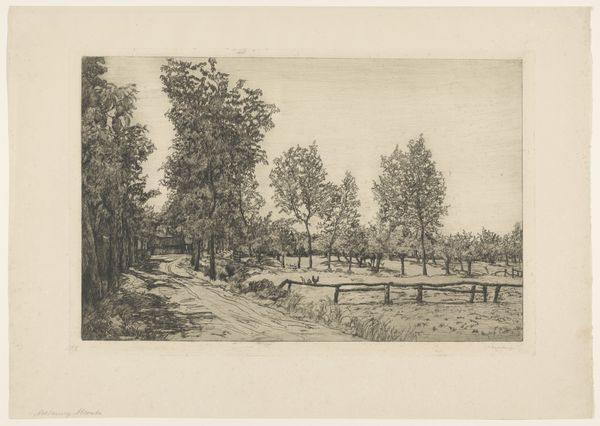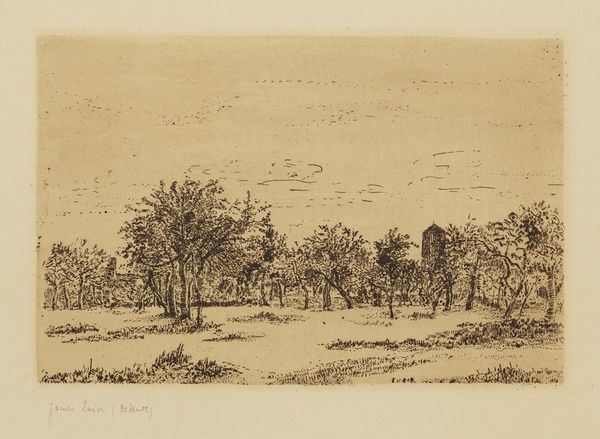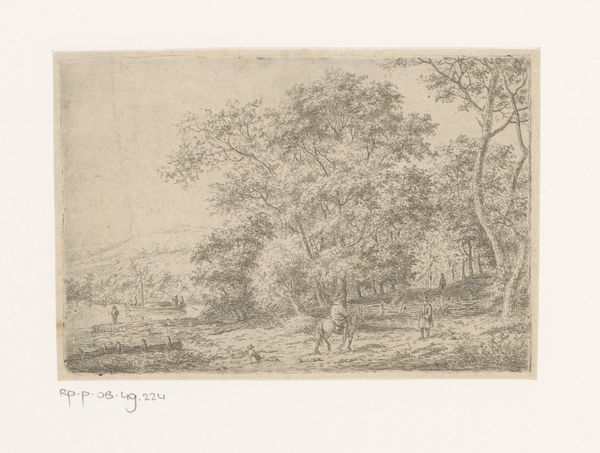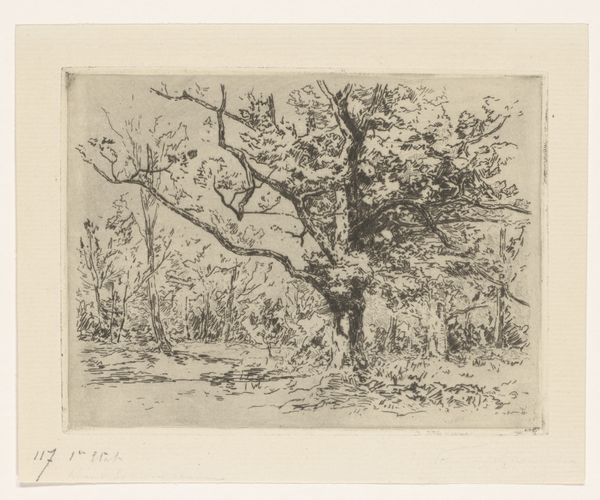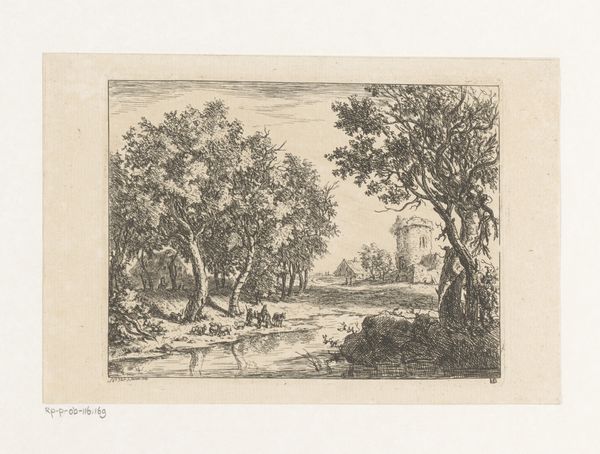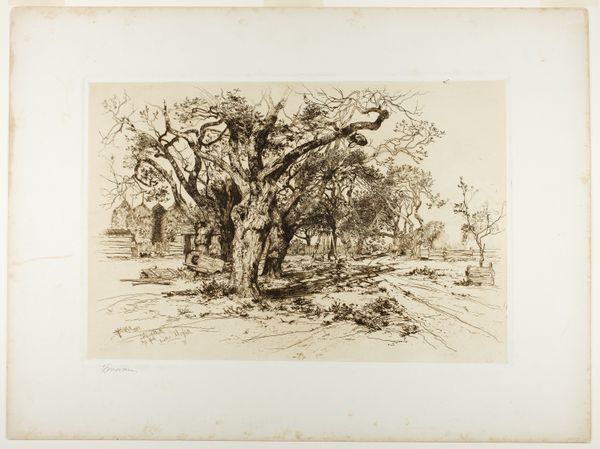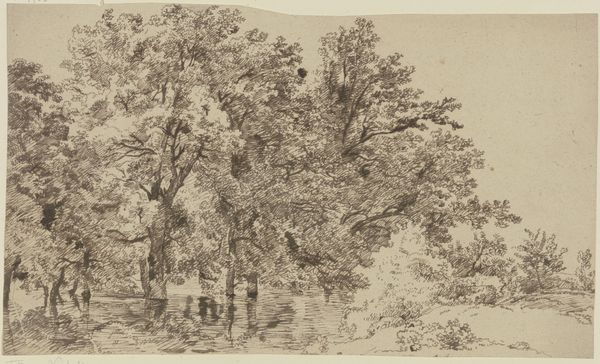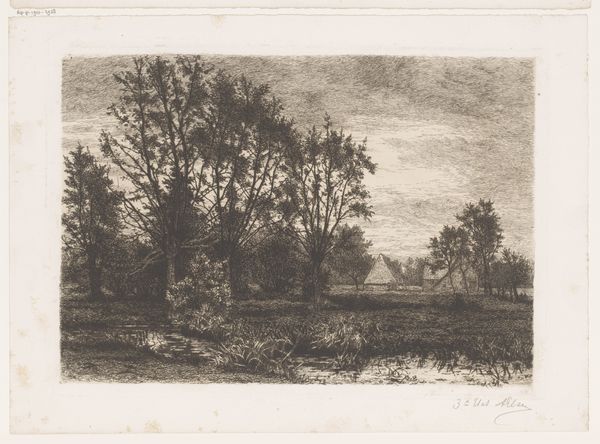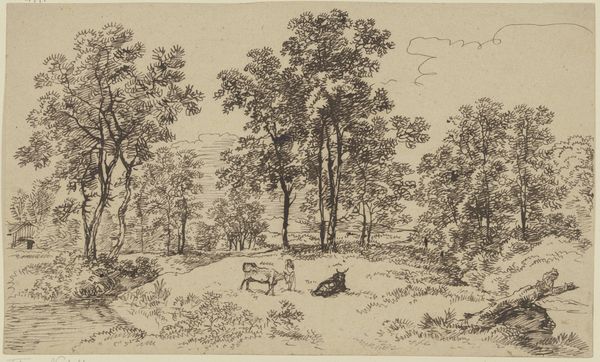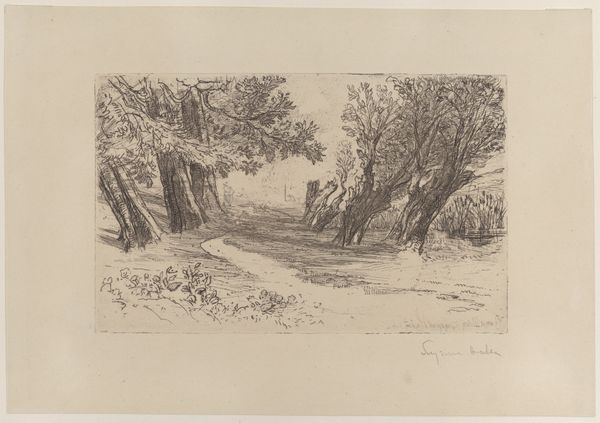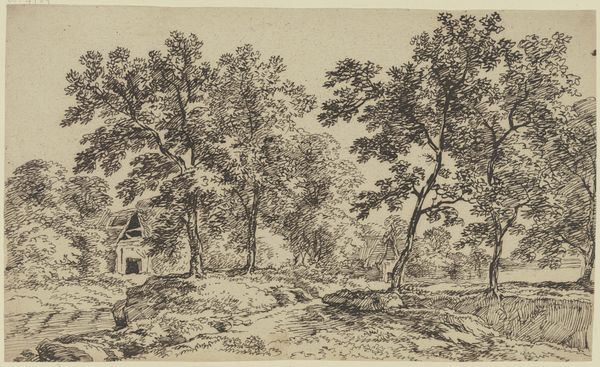
print, etching
# print
#
etching
#
landscape
#
etching
Dimensions: height 274 mm, width 382 mm
Copyright: Rijks Museum: Open Domain
Curator: This print, "View of a House with Large Trees and a Garden," by Jules Marie Armand Goethals, likely created between 1854 and 1879, immediately suggests an escape into nature, doesn’t it? It's executed with fine, delicate lines that feel almost dreamlike. Editor: Indeed, there’s an immediate serenity in the landscape—but a deliberate framing that feels almost performative. Is it an actual garden, or more like a constructed idyll? The etching technique adds a particular depth of shadows, that really draws me in to consider the context of what makes an ideal home. Curator: You’re right. Goethals uses the etching medium to wonderful effect, building layers of tone to suggest sunlight filtering through the foliage. I read these dense patches almost as psychic space, pockets of memory attached to that domestic life. There is something so intrinsically compelling about finding peace. Editor: The image begs us to consider what he might mean to be signifying—this wasn’t created in a vacuum, right? Land ownership, class aspiration—all the socio-economic forces of the era—come into play. How accessible *is* this dream of domestic tranquility, and for whom? What social structures made it, and continue to make it, possible? The house itself feels almost like a prop. Curator: It is certainly food for thought, and makes me wonder if this resonates with any broader sense of Goethals engaging with his audience. Though there is no sign of any obvious person in the frame of the piece, the presence of this image offers viewers the experience to envision themself. Editor: That brings me back to considering how this image might have circulated as well. The affordability of prints meant these idyllic images became accessible to a broader segment of the populace than an oil painting. Think of the message that carries with it. Curator: What an interesting lens through which to consider art’s ability to inspire as well as its subtle reflection of societal values! Editor: Agreed. Thinking about who owns this dream is crucial to how we consume art even today.
Comments
No comments
Be the first to comment and join the conversation on the ultimate creative platform.
